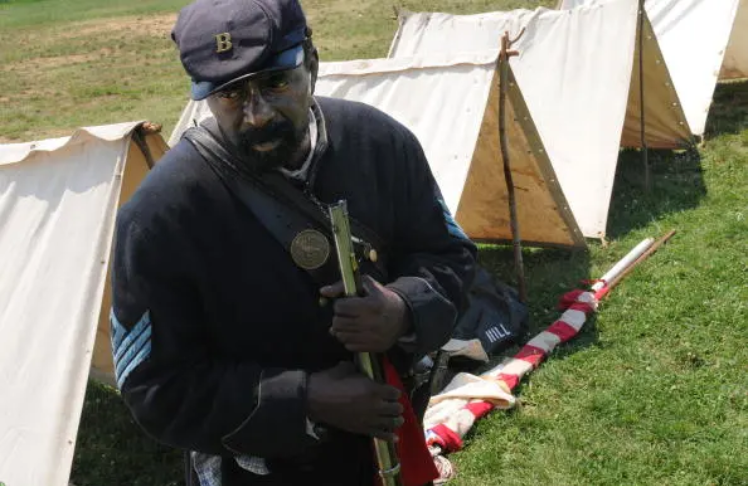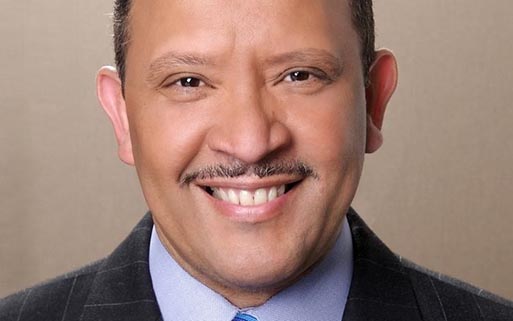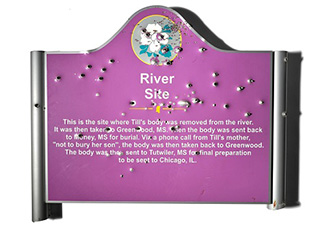
by Renata Sago
“When you consider reenactment, what does that mean to you?” Lavada Nahon asks.
For more than a decade, Nahon, a technical theater specialist-turned-culinary and cultural historian, has interpreted research about life in New Netherland — the bustling 17th century Dutch, English, and French settlement that predates modern-day New York City — as a Black historical reenactor.
Specializing in the pre-colonial history of people in the city, Nahon has talked to public school groups and private tours, “on a hearth in a historic site in period clothes.” Reenactment, she explains, is part historical preservation, part business, part education. And she is one of few Black people in New York state doing this work.
“It’s eye opening. Giving presence to thousands and thousands of people that otherwise would not be spoken to at all — spoken about at all,” Nahon says.
Nahon is part of a small but growing cohort of Black people finding work as historical reenactors, a profession in which Black faces aren’t often seen.
At a time when states are restricting the teaching of Black history, Nahon and others — actors, historians, living descendents of historical figures, and amateurs — are using their talents to show that the stories of Black people and other people of color are woven throughout the nation’s history.
“We know by 1628, 1629, you could be in the city of Amsterdam, which is now New York City, and hear 18 different languages,” Nahon says. “This is a multicultural environment from the very beginning, but without Black reenactors, without Black living historians, when we have these historic events, they are not present.”
Along with Nahon, dispensing historic culinary knowledge from her perch in a pre-colonial house in New Amsterdam, Black reenactors range from Civil War troops to rebels fighting the British in the Revolutionary War. Reenactors offer insight into the lives of the enslaved and free peoples on and off of plantations, but it also brings a measure of racial healing by walking in the footsteps of their ancestors. In 2019, for example, a group of reenactors traced the route of a famous slave rebellion in Louisiana.
“When you’re out there and actually marching, it brings you back to that trauma,” Scierra LeGarde, 28, who performed in the Louisiana rebellion reenactment, told The New York Times. “It shows the resilience of who these people were — and are because they live on through us.”
Nahon says truthful reenactments are essential for racial healing by ensuring that the roles of Black people in American history are not minimized or “whitewashed.”
“My white colleagues are talking Black history because if they didn’t speak about it, no one would be talking about it. Especially when Blacks are not in that space,” Nahon says.
Reenactments are just a portion of the $12.9 billion national heritage area economy. There are more than 2,600 National Historic Landmarks in the United States, with the largest number — 275 — in New York. An estimated 200,000 people participate in re-enactments every year.
Nahon says her own journey to the past began on her family’s farm in her home state of Texas, learning to prepare meals with her mother. It continued when, in her 20s, she moved to New York and began researching the region’s culinary history and its cooking traditions.
“I started looking at museums and Dutch houses and Dutch history in New York and then I also started studying culinary history,” Nahon says. “Over time, the hobby became my profession.”
She joined the staff for the Historic Hudson Valley where, for 12 years, she shaped public programs that included cooking demonstrations of meals prepared in the houses of New Amsterdam’s elite class —– meals prepared primarily by formerly enslaved people of African descent. What she discovered in her research inspired her.
“You have these amazing people in kitchens, but you also have them in the field,” planting or harvesting wheat,” Nahon says. “You have them on the rivers as boatmen. You have them doing coopering, which is making the wooden barrels that are a major part of trade.”
While her fellow reenactors are white, Indigenous, and African, her audience has been mostly white, which she says can be frustrating.
“The public believes what they see. If they see a white person standing there doing it, they’re going to assume a white person always did it,” Nahon says.















